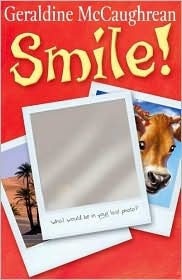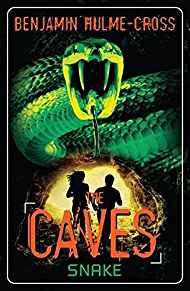Smile!
Author: McCaughren, G
Reading Age: 11 to 13 Sixth Class
Publisher: Oxford University Press
Illustrator: n/a
ISBN-13: 9780192719614
Number of pages: 128
Product Description
When Flash’s plane crashes in the wilderness, he finds himself injured and alone, armed with nothing but a cheap instant camera. Then out of the sunlight appears a g... Read more
€6.24 Original price was: €6.24.€6.00Current price is: €6.00.

Product Description
When Flash’s plane crashes in the wilderness, he finds himself injured and alone, armed with nothing but a cheap instant camera. Then out of the sunlight appears a girl in a scarlet dress. Sutira and her brother take Flash home to their remote village, where the people have never met a photographer–or seen a photo. Flash has ten pictures left, but what should he take a picture of? The most beautiful girl in the village? An irreplaceable piece of art? A cow? Flash has always known the magic of photography, but not until he takes those last ten pictures does he realize just what wonders can be worked with light, love, and a camera.
Children’s Literature
Imagine being stranded in the tropics with not much more than a Polaroid camera. You may no longer appreciate the technology of instant photography, but villagers who have never before seen a camera think that it is magic. ‘Flash’ is the nickname of the semiprofessional photographer and pilot who crashes his plane amid a group of friendly but curious tribal people. Flash has only ten pictures left in his camera; only ten opportunities to help the villagers capture and forever preserve their meaningful moments. Flash does some quick and creative thinking to handle a variety of potentially challenging situations. In the end he manages to please and impress all of the people, including himself. There is a reference to a psychedelic experience that may be over the head of younger readers. For the most part, though, this is a tender and touching story that will help readers gain an appreciation and understanding of other cultures.
School Library Journal
Gr 4-6-Problems abound in this British import. A photographer’s plane crashes near an unidentified third-world society where the people speak English. Having managed to save only his Polaroid camera, the man gets off to a shaky start in his new surroundings by blinding the villagers with his flash, but soon impresses them with his ‘magic painting.’ He then debates with them over how to use his remaining nine shots. In the process, he marvels over their cultural differences and discusses the value of photography. Only after the final shot is taken does he remember his own family and, conveniently, get rescued. The comical hand-drawn illustrations of each photograph are not enough to save this story. Conflict is lacking, and the photographer’s apathy toward finding medical attention or returning home after his crash will test the most generous readers’ suspension of disbelief. The characters are undeveloped, and the constant repetition of the word ‘primitive’ is annoying. Finally, a tacked-on insinuation that the village and the people were merely a dream is a complete letdown.-Jayne Damron, Farmington Community Library, MI Copyright 2006 Reed Business Information.
Kirkus Reviews
A fast-paced opener finds Flash, photographer-pilot, plummeting to the earth, cushioned by trees and thrown out of the cockpit, while flames gobble up his plane upon final impact. Where is he? It doesn’t matter at first. The confused photographer’s holding his Polaroid, when, led by two child primitives, he stumbles into a village. The camera becomes the best possible item he could have brought, as the primitives see special photographs that reflect and symbolize both their physical and internal world. The black-and-white drawings, one Polaroid per chapter, create the desire to look around the picture’s four corners to see the rest of the landscape and people, as well as flip through the pages to see what part of the village comes next. As Flash continues to experience confusion and head pain, he learns to think with his heart and develops as a character. What wasn’t important in the beginning, when his near fiery death and survival were central, becomes a delicious set of mysteries after his rescue: Where was he, and who were those people that he grew to love? Exquisitely told; fascinatingly seductive. (Fiction. 8-11)



